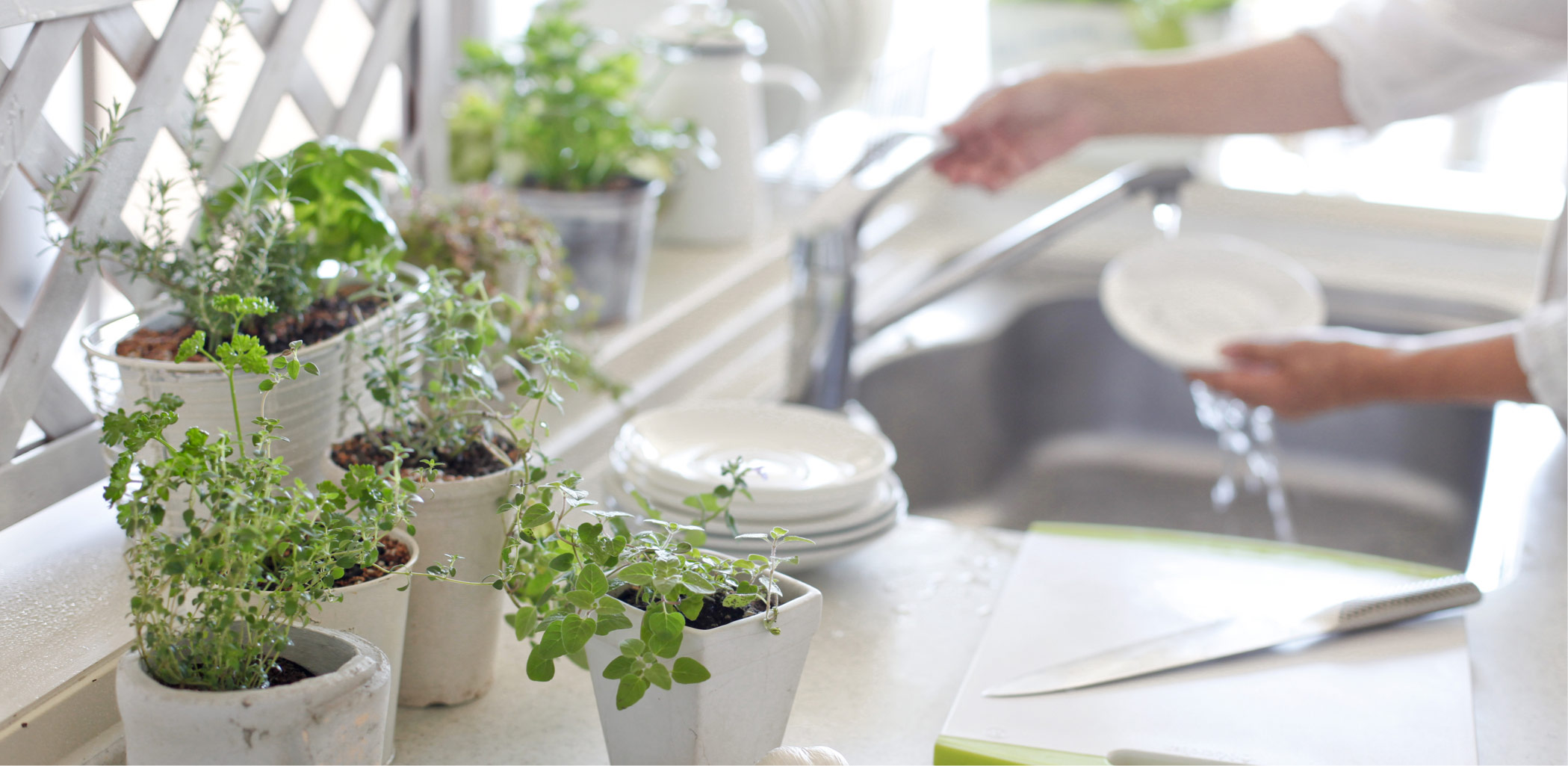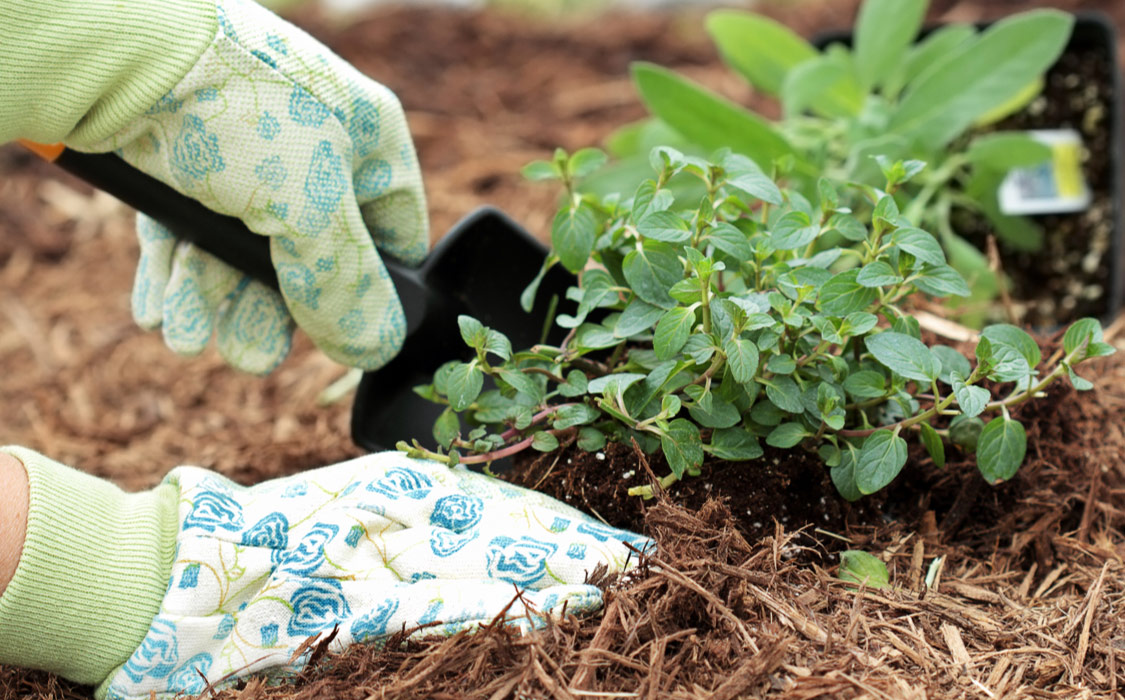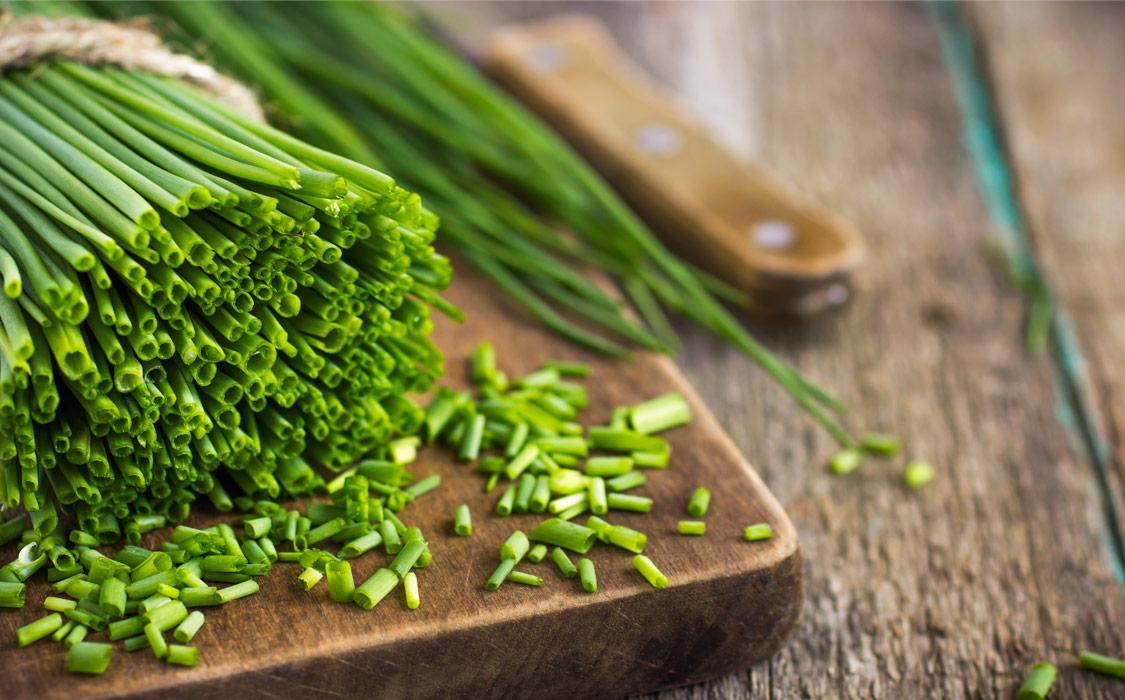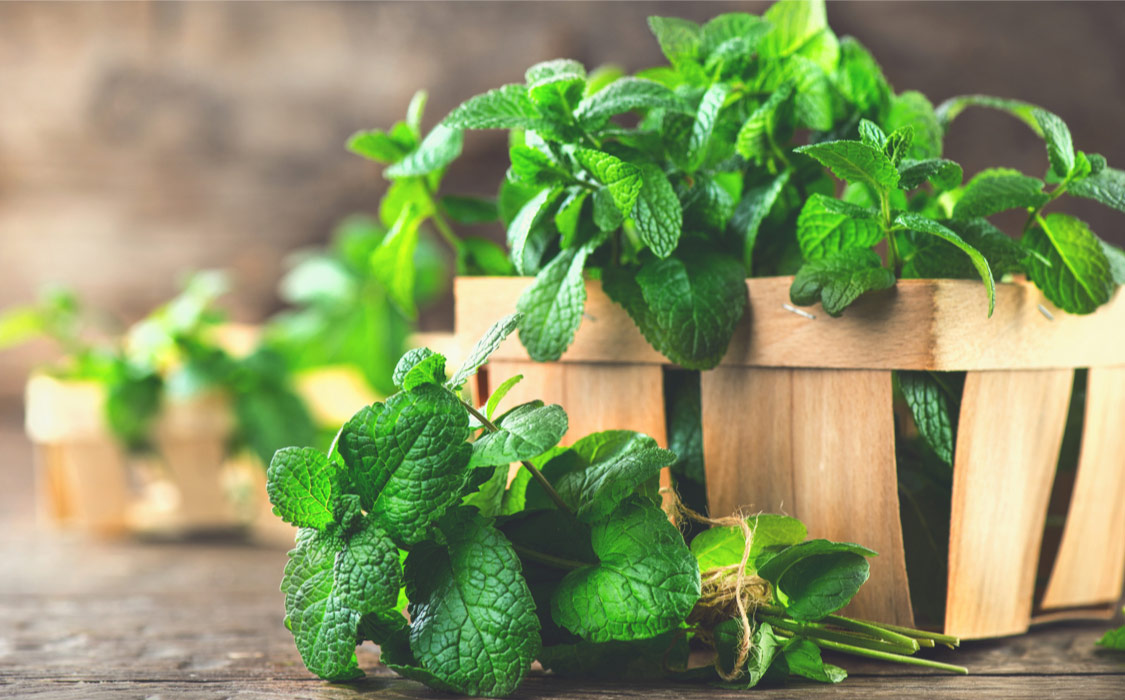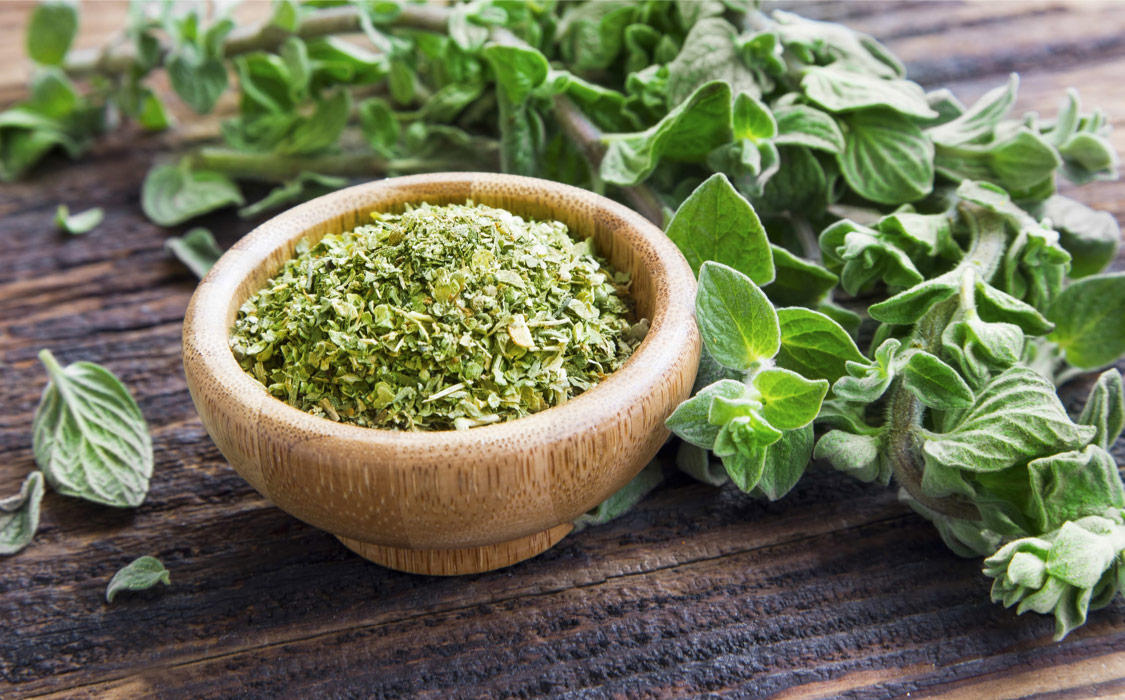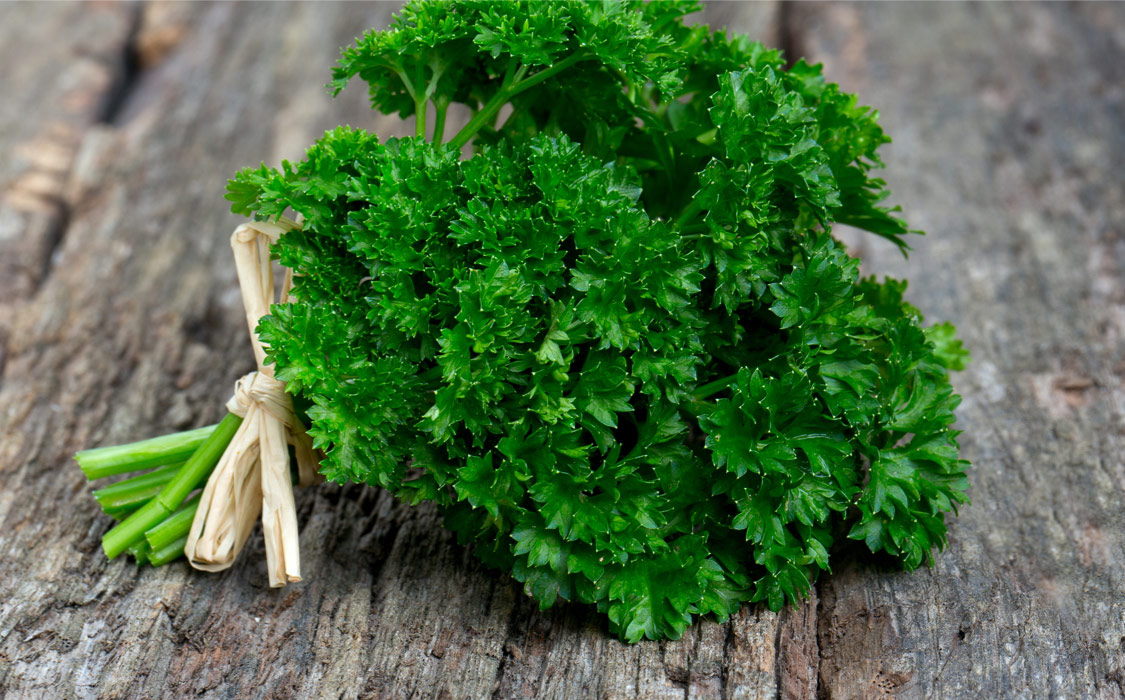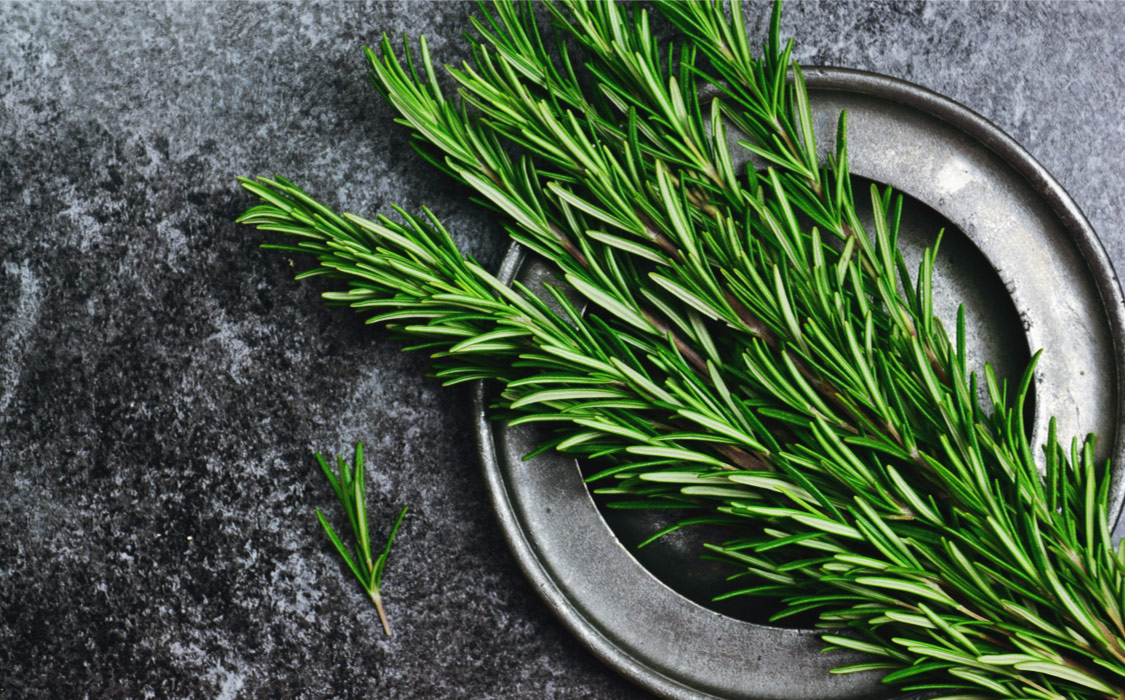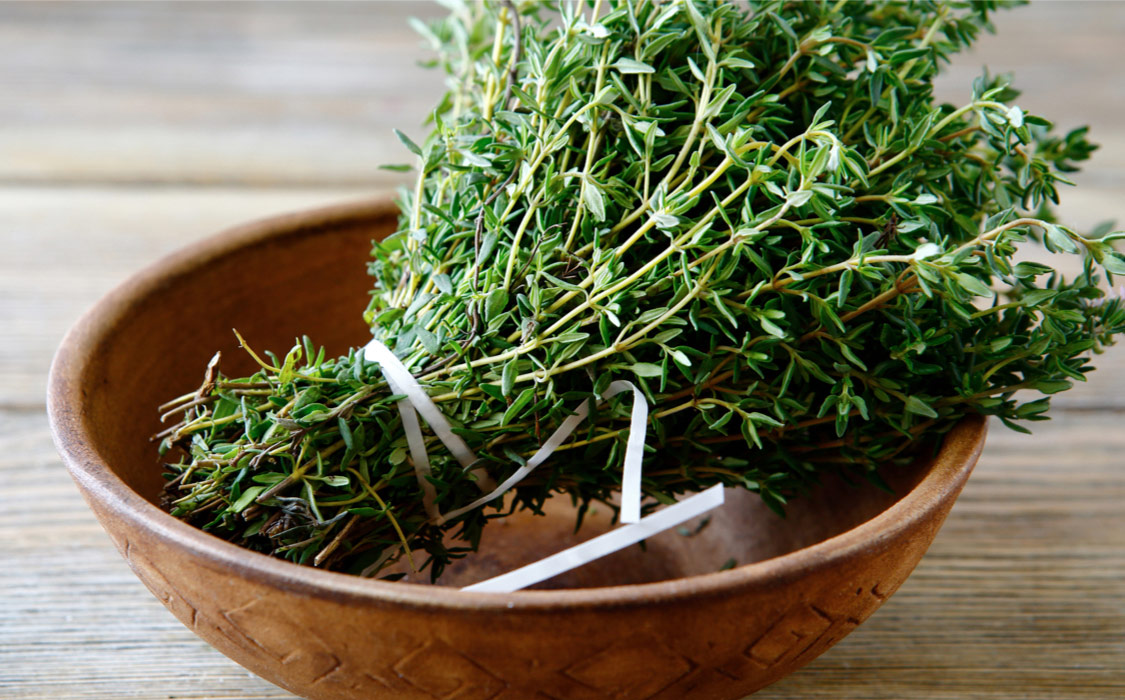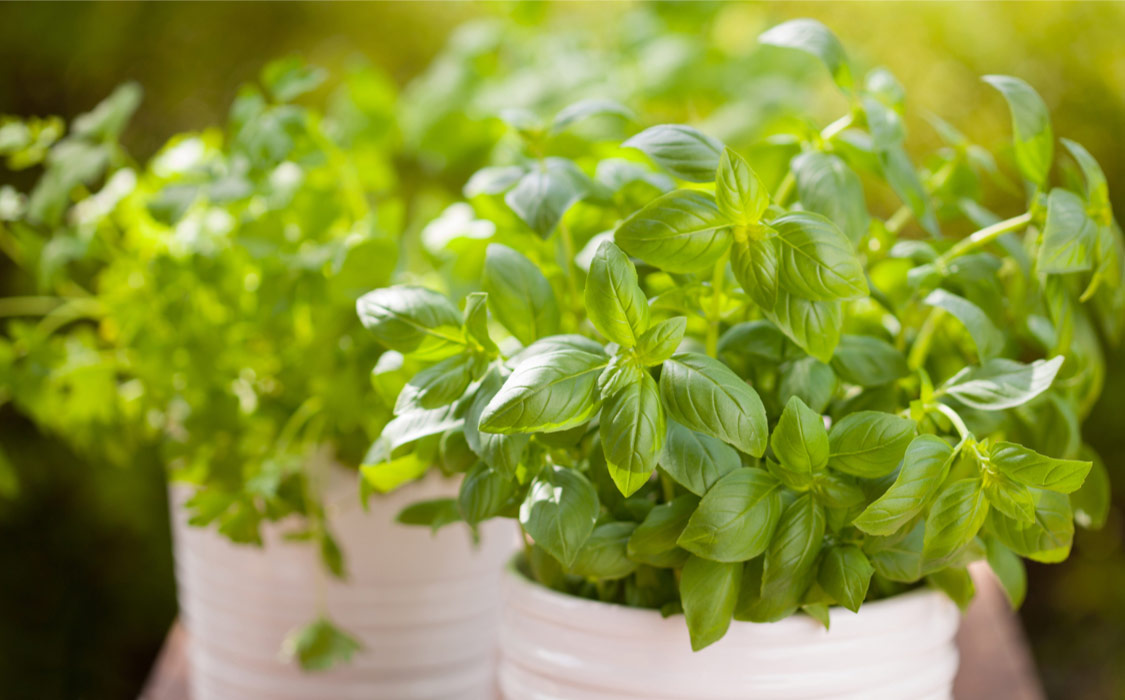Planting Ideas
Welcome Spring with an Indoor Herb Garden!
Temperatures warming? Birds chirping? Flowers peeking out from their beds? According to the calendar, Spring has officially sprung, and hopefully your surroundings are following suit. Regardless of what’s going on outside, why not give the season a gentle boost with some indoor gardening and greenery? Fresh herbs are fun, flavorful and relatively foolproof. And Atlas is here to get you started!
Where to grow? … The light side is the right side.
First, let’s figure out plant placement. If you’re planning to cook with your crop (and why wouldn’t you?), a kitchen window is ideal, provided it gets good sunlight. Most experts advise six hours of sun, minimum, with the sweet spot at about eight hours.
No window options? No problem.
A good grow light will work just as well. Plants should be placed within a foot or so of the lightbulb(s) for best results, and, depending on how much light your herbs require, 12 to 16 hours of lamplight per day is recommended.
In most cases, herbs get all the sun they need from a south-facing view. Tied for second place are east- and west- facing. North-facing isn’t a good option, unless you’re south of the equator, which we’re guessing isn’t the case.
If you’re growing herbs adjacent to a window (like, on the sill), keep in mind that temperatures and humidity will fluctuate with weather conditions, and take whatever steps are needed to keep plants healthy (hint: read the instructions!).
How to Grow? … Just add water (and some common sense)
- Herbs can be grown in all different types of planters – galvanized steel, ceramic, plastic. Choose whatever best fits your budget, décor, and the anticipated size of your crop.
- Some herbs start fine from seed, while others stand a better chance of thriving if you begin with plants or cuttings. Make sure you know the difference.
- Almost all the herbs on our list do well in partial to full sun and loamy soil, which contains a mixture of clay, sand and organic material.
- Keep soil moist, but don’t oversaturate. Make sure the pot or planter has ample drainage.
- Most won’t require it, but if plants should start to wilt, a little organic plant food can help.
- Most herbs do well in cool to moderately warm temperatures. A good rule of thumb – if you’re comfortable, so are they.
For LOTS more information about these and other herbs, visit the Farmer’s Almanac web site here and here.

